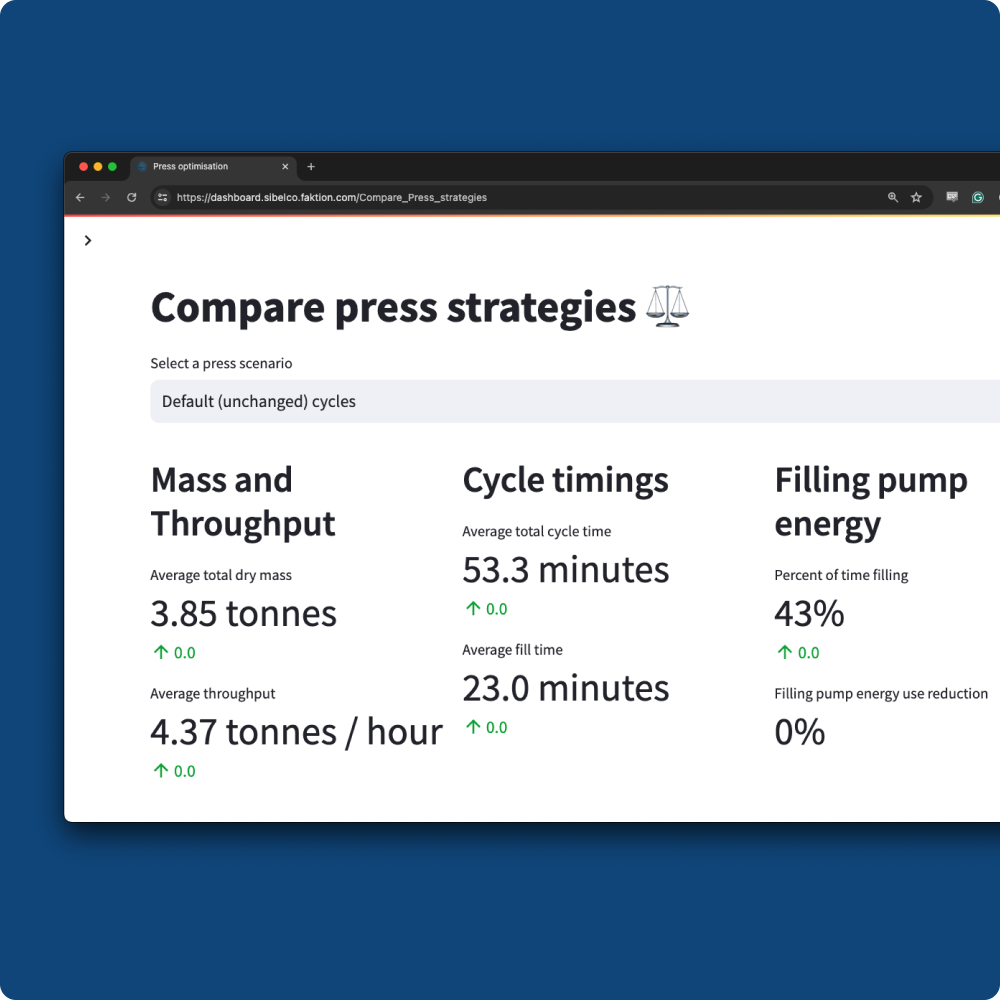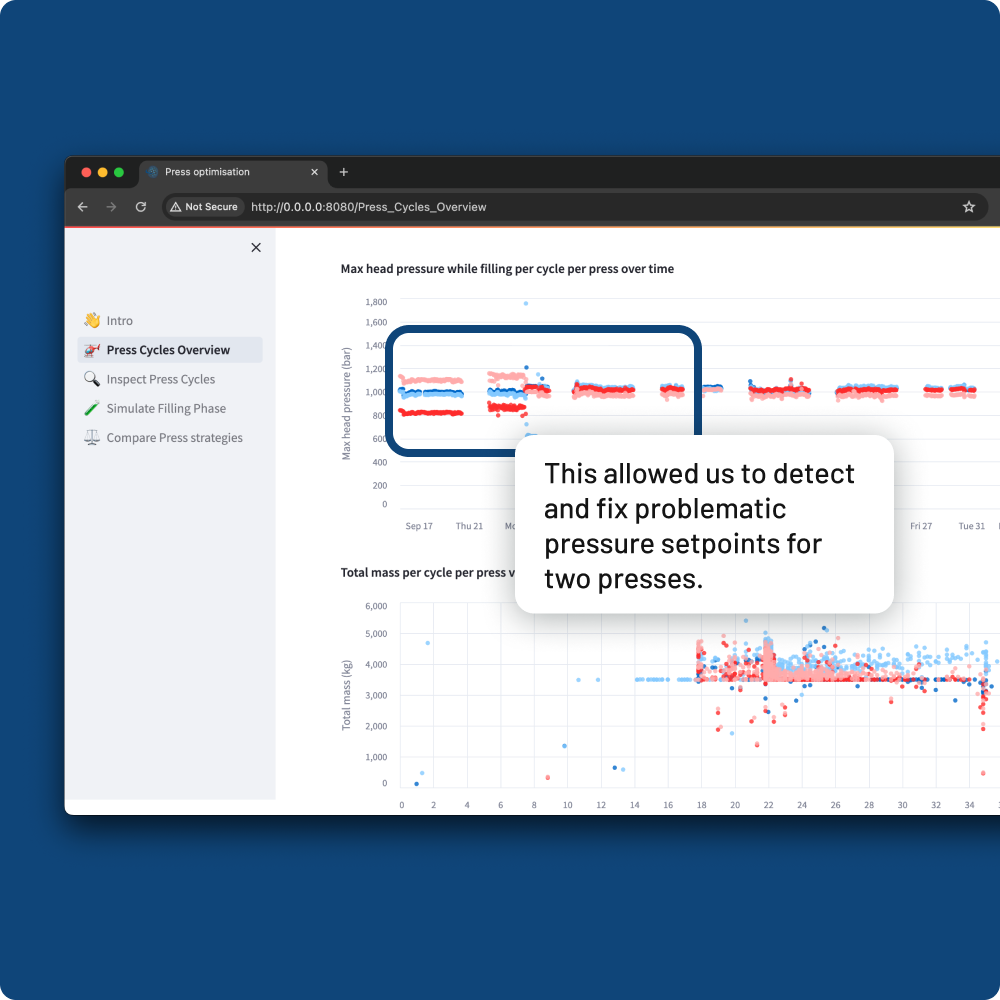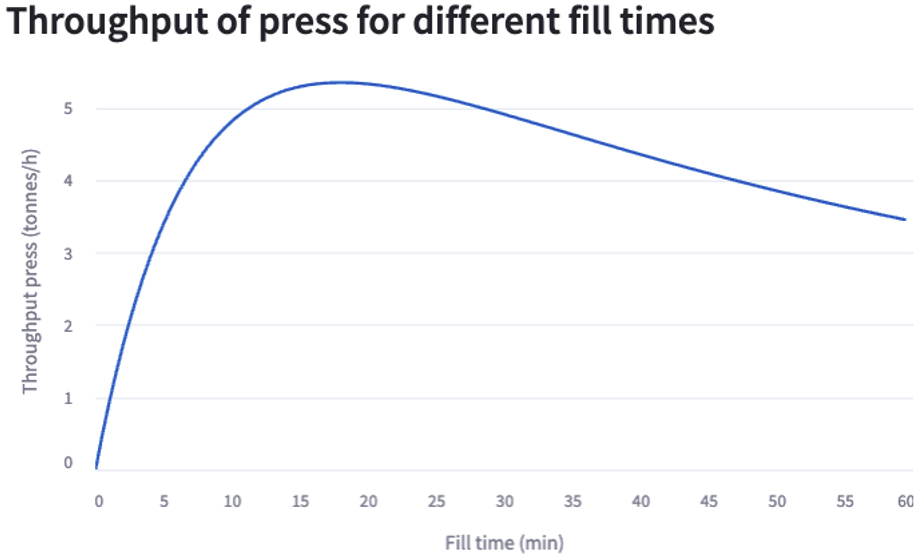Sibelco aimed to enhance clay press efficiency. Faktion’s AI dashboard optimised filling time, lifting throughput by 5% and cutting pump energy use by 12%. It offers actionable insights, paving the way for sustainable scaling across global sites

Sibelco is a global material solutions company headquartered in Antwerp, operating over 100 production sites in more than 30 countries.
Sibelco’s plant in Cornwood mines kaolin clay, a type of clay used primarily in ceramics, sanitaryware and engineered stone. After mining, the excess moisture must first be squeezed out of the clay using a clay press. The clay pressing process can be divided into three phases: In the first phase, the clay press is filled with moist clay. Subsequently, the most clay is squeezed to remove water. Lastly, in the third phase, the clay is dropped out of the press.
The duration of each phase directly affects throughput (amount of clay processed per hour), clay quality (residual moisture level), and energy consumption (longer cycles require more power).
At the time, throughput was already close to maximum capacity, so only marginal gains of around 5% were possible. Yet even such small improvements could generate significant additional yield and revenue when scaled across global operations. Moreover, every efficiency gain also supports Sibelco’s sustainability goals.
Our clay press operations are nearing maximum capacity, yet inefficiencies in the process prevent us from achieving optimal throughput and energy savings.
Sibelco was dedicated to find a reliable partner that would be able to develop a data-driven optimisation tool for improving the throughput of the clay pressing process. Faktion’s expertise in process optimisation, and more specifically yield and throughput optimisation, proved to be the perfect match for a strategic partnership.
Developed a virtual replica of the clay press process, enabling real-time simulation of various operational scenarios.
Used the digital twin to analyse various scenarios to determine the optimal filling time, balancing throughput and energy efficiency.
Provided detailed insights into press performance, allowing deep dives into specific cycles and devices.
Monitor every cycle of the clay press, notifying operators when specific parameters in the filling or dropping phases fell outside defined boundaries, enabling corrective action on the spot.

Developed a virtual replica of the clay press process, enabling real-time simulation of various operational scenarios.

Used the digital twin to analyse various scenarios to determine the optimal filling time, balancing throughput and energy efficiency.

Provided detailed insights into press performance, allowing deep dives into specific cycles and devices.
To optimise clay press throughput, Faktion built an AI-based optimisation dashboard, allowing to simulate different strategies and providing insights into the outcomes of these simulations. To come up with this AI-based optimisation dashboard, several steps were taken.
An exploratory data analysis revealed that the squeezing and dropping phases in the clay pressing process were quite rigid and, if executed according to the predetermined setpoints, there was little room for improvement. The press filling phase was more interesting. The efficiency of the filling process decreases over time, since the volume in the clay press is limited. Resistance to the filling increases over time as it becomes progressively harder to add extra clay to the press that is started to become full, comparable with trying to putting a sleeping bag back in its cover. Moreover, the press filling process is powered by pumps that consume a significant amount of energy, which implied that potential energy savings could be realized next to throughput improvements.
Mathematically, the press filling process follows an exponential decay function, as indicated by the figure below. The filling time can be seen as a predetermined period of time that clay will be added to the press, no matter how full the press is. The clay mass in the press keeps increasing as long as clay is added to the press (indicated by filling time), although at a progressively slower rate (decay), until a ceiling (maximum press capacity) is hit.

The fact that the clay press filling process follows an exponential decay function implies that, after a certain optimal filling time, the throughput will decrease with longer filling times. After all, if the clay mass in the press increases at a progressively slower rate as filling times get longer, proportionally speaking, less clay can be pressed as filling time increases, leading to a decrease in throughput, as indicated by the figure below. A simple calculation might simplify this reasoning. Suppose that the squeezing and dropping phase together take 45 minutes. Based on the visual above, we can say that if the fill time is fixed at 15 minutes, approximately 3.5 tonnes of clay will be added to the press. Together with the squeezing and dropping phase, his implies a throughput of 3.5 tonnes per hour. On the other hand, if the filling time is fixed at 60 minutes, approximately 5 tonnes of clay can be added to the press. This results in a throughput of approximately 2.9 tonnes per hour. Hence, after a certain optimal filling time, throughput starts decreasing. But how can we find this optimal filling time?
